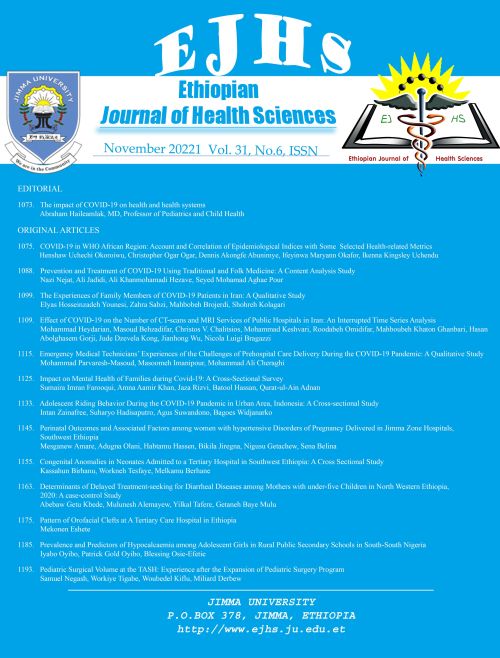Main Article Content
Yield of Ultrasound Guided Fine-Needle Aspiration of Intraabdominal Masses and Lymph Nodes: A Prospective Cross- Sectional Study
Abstract
BACKGROUND፡ Ultrasonography (USG) guided fine needle aspiration cytology (FNAC) is a safe, rapid and accurate procedure for establishing diagnosis of intraabdominal lesions. The aim of this study is to assess the efficacy, and factors affecting the yield of USG guided FNAC. In addition, we intent to analyze the various intraabdominal masses based on location and cytological features.
METHODS: A prospective cross-sectional study was conducted in the department of radiology, between September 2019 –September 2020. Patients’ preparation and USG guided FNAC procedures were performed according to the departments protocol. Chi-square test was used to assess the significance of association between independent and dependent variables.
RESULTS: Seventy-four USG guided FNAC were performed. The liver was aspirated in 34 (45.9%) followed by omentum, nine (12.2%), abdominal lymph nodes in seven (9.5%) and ovaries in four (5.4%) of the cases. The sample was diagnostically adequate in 56 (75.7%). Malignancy was diagnosed in 52 (70.3%) followed by inflammatory 3(4.1%) and one (1.4%) case of indeterminate spindle cell neoplasm (1.4%). There were no statistically significant associations between the diagnostic yield and location of the lesion, the size of the lesion, the sampling technique, the number of needle passes and qualification of the operators.
CONCLUSION: USG guided FNAC provides a good diagnostic yield and there is no difference in diagnostic yield between the various location of the lesions, sampling techniques, number of needle passes and qualification of the operators. A larger size study is recommended to better analyze factors affecting the
diagnostic yield of this procedure.






